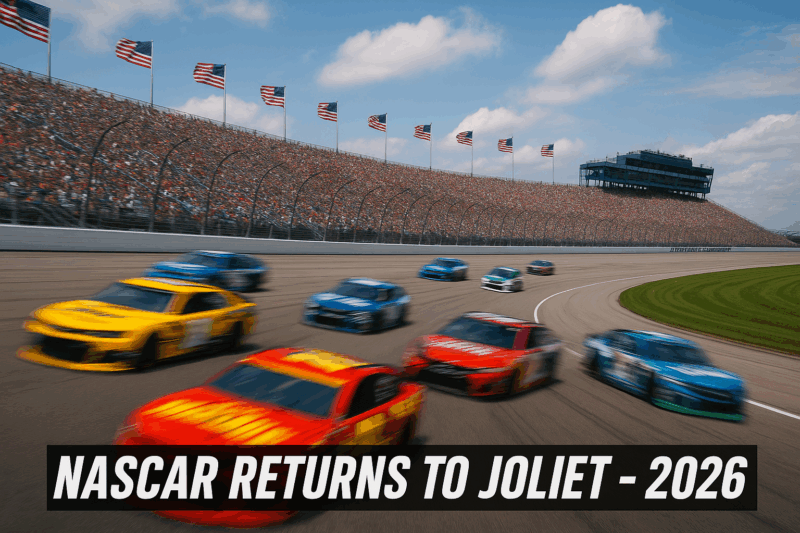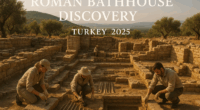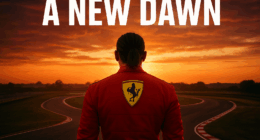A Homecoming Story: From Urban Streets Back to Traditional Oval Racing
In a move that blends nostalgia with strategic scheduling, NASCAR announced it will return to the long-dormant Chicagoland Speedway in Joliet for the 2026 season, filling the void left by the paused Chicago Street Race. This homecoming represents more than just a venue change—it’s a story of tradition meeting innovation, economic impact, and the evolving landscape of America’s premier racing series.
The announcement has sparked excitement among longtime NASCAR fans who remember the thrilling races that defined Joliet’s place in motorsports history, while also raising questions about the future of urban racing experiments like the Chicago Street Race.
The Human Impact: Communities, Fans, and Economic Ripple Effects
For the residents of Joliet, NASCAR’s return represents a significant economic and emotional boost. Mayor Terry D’Arcy’s enthusiasm reflects a community that has watched their beloved speedway sit largely unused since 2019, serving primarily as a Ford SUV parking lot during the pandemic-era semiconductor shortage.
“This is a fantastic homecoming for Joliet and the entire region,” D’Arcy said, capturing the sentiment of a community eager to reclaim its motorsports identity. The return promises to restore not just racing action, but the economic vitality that comes with hosting a major NASCAR event.
Meanwhile, Chicago Street Race fans and downtown businesses that benefited from the Grant Park event face uncertainty. The street race brought unique energy to the city’s core, transforming iconic locations like Michigan Avenue and Grant Park into a racing spectacle unlike anything NASCAR had attempted before.
Local businesses, hotels, and restaurants in both communities now prepare for different scenarios—Joliet gearing up for a racing renaissance, while Chicago contemplates what comes next in its relationship with NASCAR.
Facts and Figures: The Numbers Behind the Move
The decision to pause the Chicago Street Race and return to Joliet is rooted in concrete data and logistical realities:
Chicago Street Race Performance:
- Generated $128 million in total economic impact in 2024
- Drew 53,036 unique visitors to Chicago
- Created $43.6 million in media value for the city
- TV viewership declined for three consecutive years, averaging 2.1 million viewers in 2025
Chicagoland Speedway History:
- Hosted NASCAR’s premier racing series for 18 years (2001-2019)
- Features a traditional 1.5-mile oval track
- Has been largely unused since NASCAR acquired it in 2019 as part of a $2 billion merger
- Last NASCAR race held in 2019, representing a 6-year gap
Logistical Challenges:
- Chicago Street Race required extensive build-out and breakdown processes
- 12-turn, 2.2-mile circuit through Grant Park proved complex to construct
- Weather delays affected the first two years of the street race
- City expressed concerns about scheduling conflicts with July 4th weekend
The Evolution of NASCAR: Traditional Tracks vs. Urban Experiments
NASCAR’s decision reflects the ongoing tension between innovation and tradition in modern motorsports. The Chicago Street Race represented a bold experiment—the first street course event ever produced by NASCAR—that brought racing to new audiences in an urban setting.
The street race’s unique 12-turn, 2.2-mile circuit through Grant Park, down DuSable Lake Shore Drive, and up Michigan Avenue created spectacular television moments but also presented logistical challenges that traditional oval tracks avoid.
Lessons from the Urban Experiment
The three-year Chicago Street Race run provided valuable insights:
- Urban events can generate significant media value and tourism
- Weather vulnerability remains a major concern for street courses
- Complex setup and breakdown processes create scheduling challenges
- TV ratings don’t always correlate with economic impact
NASCAR’s move to San Diego for 2026, holding a street race at Naval Base Coronado, suggests the series remains committed to urban racing while learning from the Chicago experience.
What Lies Ahead: Joliet’s Renaissance and Chicago’s Future
The return to Chicagoland Speedway requires significant preparation. NASCAR must restore a facility that has endured six Chicago winters since its last race, though officials report the track remains in good condition. The July 4th weekend timing promises to create a patriotic celebration combining America’s birthday with high-speed racing.
Economic Implications for Both Communities
Joliet stands to benefit from renewed tourism, hotel bookings, and the economic multiplier effects of hosting a major NASCAR event. Local businesses that struggled during the speedway’s dormant years now prepare for a potential revival.
Chicago, meanwhile, faces questions about future NASCAR involvement. NASCAR left the door open for the street race’s return “on a different date down the road,” suggesting ongoing discussions about timing and logistics.
The Broader NASCAR Strategy
This move aligns with NASCAR’s broader strategy of maintaining traditional strongholds while experimenting with new markets. By moving the Chicago Street Race to San Diego and returning to Joliet, NASCAR demonstrates flexibility in adapting to local concerns while preserving regional presence.
Conclusion: Racing’s Return to Its Roots
NASCAR’s return to Joliet represents both an ending and a beginning. While the Chicago Street Race takes a pause, allowing NASCAR to address logistical concerns and explore better timing, the traditional oval racing experience returns to a community that has eagerly awaited this moment.
The Chicagoland Speedway’s revival demonstrates that innovation and tradition can coexist in modern motorsports. As drivers prepare to return to the 1.5-mile oval where champions were crowned for nearly two decades, fans in Joliet and across Illinois celebrate a homecoming that promises to restore both racing excitement and economic vitality to their community.
Whether this represents a temporary return or a permanent shift remains to be seen, but for now, NASCAR returns to Joliet speedway where the roar of engines will once again echo across the Illinois prairie, reminding everyone why traditional oval racing has remained the heart of American motorsports for generations.





